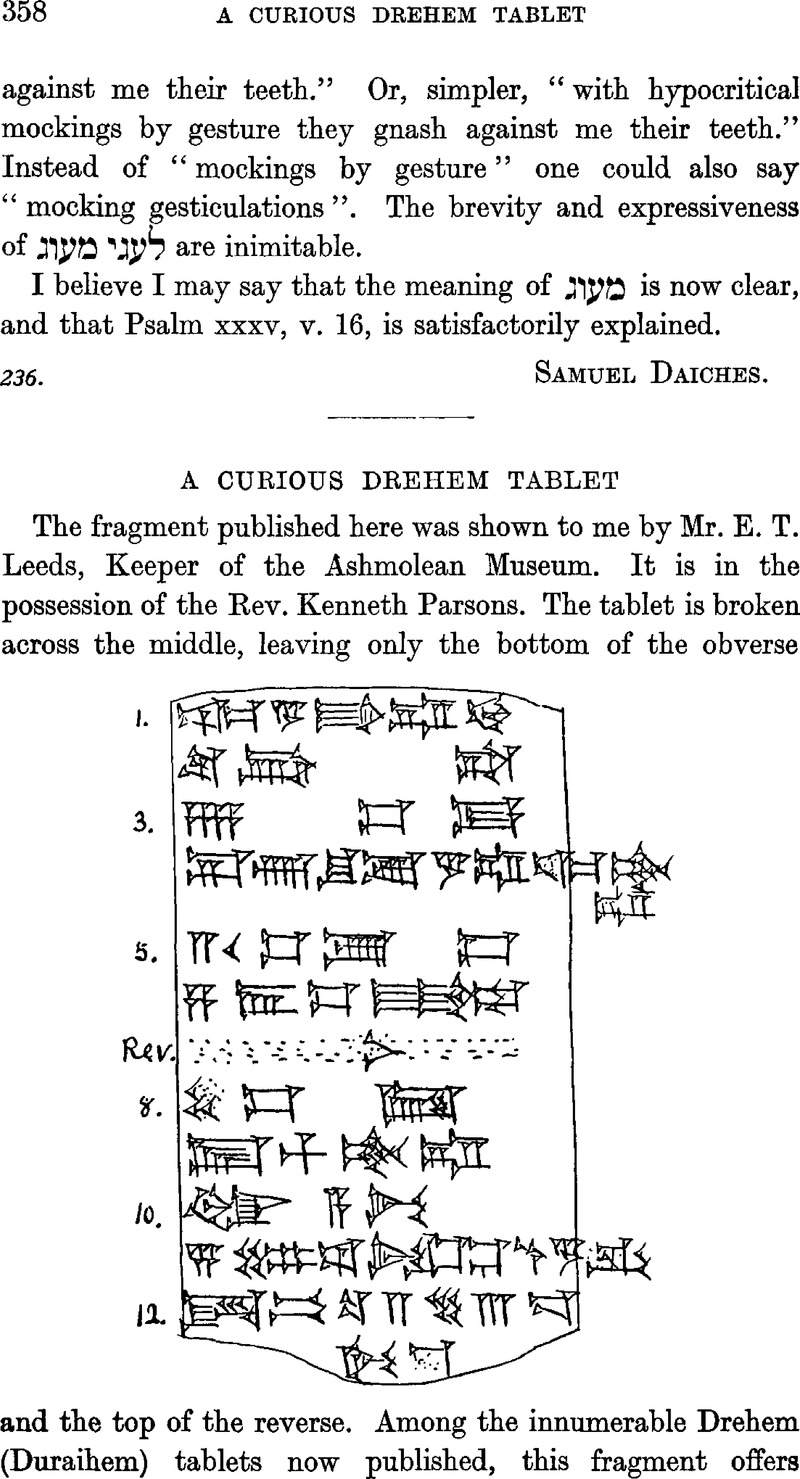No CrossRef data available.
Article contents
Abstract

- Type
- Miscellaneous Communications
- Information
- Copyright
- Copyright © The Royal Asiatic Society 1935
References
1 rêš namkuri, see Thureau-Dangin, , Inventaire, i, p. 19, n. 1Google Scholar.
2 gišdag. See gišdág, = dág, aŠti (= kussû), tuŠ (= ašābu), dur-gar(= kussû), and dag = šubtu, xseat, abode (Meissner, SAI. 3869), all = giš5dag, KBo, i, 42, v. 6–9; Deimel, Lexikon, No. 280, 13, erroneously read giš-pdr, net in this syllabary.
3 Apparently a noun, and name of the ganunu. But Šu-zu-gar = šutlumu, to give to, entrust ? nam-tar-ra-zu ana-gim šu-zu-gar-ra… = ši-ma-tuka ki-ma Anim šu-ut-lu-ma-[at],” Thy fate has been bestowed upon thee even as Anu,” PBS. x3, No. 8, 5–6. Perhaps šu-zu gar-ra, “was put into thy hand,” and gar = šutlumu, hence [ana kati-ka]to be restored after šutlumat?
4 See Genouillac, TSA. 26, i, 1; Allotte de la Puÿe, DP. 436, i, 1.
5 Written GIŠ + KISAL = šamnu.Cf. QudeaCyl. B, 3, 19.
6 This proves that sa = kannu, Meissner, SAI. 1938.
7 This sign, Deimel, Lexikon, No. 261, with value a-ra-ag = arhu, našpaku, means “granary”; with value u-si = ki-ri-tu, and karitu, granary. KAR. 178, vi, 68 has this sign, where v Raw. 48, iv, 36 has še'u, grain.
8 Sign MAŠ. So also in Agade texts from Kish. But Chiera, Lex. Texts, 109, i, 12; 100, ii, 10, é-bar, in the Idgr. for šangu. Here é-maŝis the name of a building or temple.




